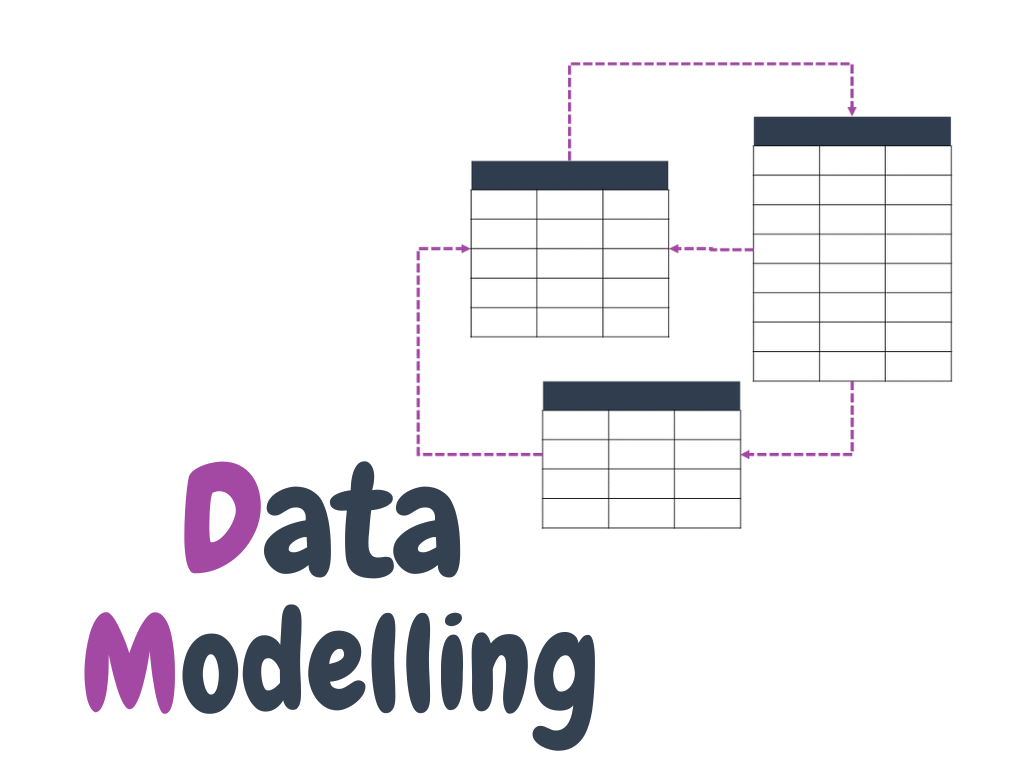In our increasingly data-driven world, businesses are
turning to advanced analytics to gain insights, make
informed decisions, and outpace the competition. However,
the success of these analytics efforts hinges on a crucial
yet often overlooked process: data modelling. This
foundational step is vital for transforming raw data into
valuable insights.
Let's dive into why data modelling is essential for a robust
advanced analytics solution and how it can make all the
difference.
What is Data Modelling?
At its core, data modelling is the process of creating a
visual representation of a system's data and its
relationships. It involves defining and organising data
elements, their attributes, and the connections between
them. Think of it as creating a blueprint for how data is
stored, accessed, and managed. The goal is to ensure that
data is accurately and consistently represented, making it
easier to manage, integrate, and analyse.

The Pillars of Data Modelling
Structure and Organisation
Data modelling provides a clear structure for organising
data. By defining entities, attributes, and relationships,
it ensures data is stored systematically and logically. This
organised structure is crucial for advanced analytics, as it
allows for efficient data retrieval and manipulation.
Imagine trying to find a specific book in a library without
any categorisation – data modelling prevents such chaos.
Quality and Consistency
A well-designed data model ensures data quality and
consistency. It establishes rules and constraints for data
entry, storage, and retrieval, preventing issues like
duplicate records or incorrect data types. High-quality,
consistent data is the backbone of reliable analytics. After
all, even the most sophisticated analytics tools can't
produce accurate results from poor-quality data.
Integration
In today's complex business environments, data often resides
in multiple systems and formats. Data modelling facilitates
seamless integration by providing a unified view of data
from various sources. It defines how data from different
systems can be combined and related, enabling comprehensive
analysis. Without proper integration, advanced analytics
would be limited to siloed insights, missing the bigger
picture.
The Role of Data Modelling in Advanced Analytics
Enabling Predictive Analytics
Predictive analytics relies on historical data to forecast
future events. Data modelling organises historical data to
make it accessible and usable for predictive algorithms. By
structuring data to highlight trends and patterns, data
modelling enables businesses to make accurate predictions,
from customer behaviour to market trends.
Enhancing Machine Learning Models
Machine learning models require vast amounts of structured
data for training and validation. Data modelling ensures
data is properly organised, labelled, and formatted for
machine learning processes. It defines the features and
variables that models will use, directly impacting their
performance. A well-structured data model can significantly
improve the accuracy and efficiency of machine learning
algorithms.
Facilitating Data Exploration and Visualisation
Advanced analytics often involves exploring large datasets
to uncover hidden insights. Data modelling simplifies this
process by providing a clear roadmap of the data landscape.
It allows analysts to navigate data efficiently, identify
relevant patterns, and create meaningful visualisations.
Whether it's a dashboard, a report, or an interactive chart,
data modelling ensures that visualisations are based on
solid data foundations.
Best Practices for Effective Data Modelling
Understand Business Requirements
Effective data modelling starts with a deep understanding of
business needs. Engage with stakeholders to identify the key
questions they need to answer and the data they need to
analyse. This ensures the data model aligns with business
goals and provides the necessary insights.
Embrace Flexibility and Scalability
Business needs and data sources evolve over time. Design
your data model to be flexible and scalable, accommodating
new data types, sources, and analysis requirements. This
adaptability ensures your advanced analytics solution
remains robust and relevant in the long run.
Prioritise Data Governance
Data governance is critical for maintaining data quality,
security, and compliance. Incorporate data governance
principles into your data model, defining data ownership,
access controls, and validation rules. A strong data
governance framework enhances the reliability and integrity
of your analytics solution.
Leverage Automation Tools
Data modelling can be complex and time-consuming. Leverage
automation tools and software to streamline tasks such as
data profiling, schema design, and metadata management.
Automation reduces human errors and accelerates the data
modelling process, allowing you to focus on strategic
analysis.
In the realm of advanced analytics, data modelling lays the
groundwork for success. It transforms raw data into a
structured, high-quality asset that powers predictive
analytics, machine learning, and data visualisation. By
prioritising data modelling, businesses can unlock the full
potential of their data, make informed decisions, and gain a
competitive edge. So, next time you embark on an analytics
journey, remember: a robust advanced analytics solution
starts with a well-crafted data model. After all, even the
most advanced rocket needs a solid launchpad to reach the
stars.
Speak to a DATA LEAGUE expert today
to learn how we can help you leverage the power of data
analytics in your organisation.

